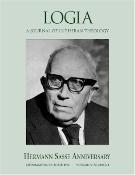LUTHER 1527 The Council of Nicaea, 325.



LUTHER 1527
Although they conceal all this with great diligence, still the old rogue peeks out and exposes himself to view clearly enough. Zwingli as much as confesses that he has never believed it his whole life long, and I have no doubt that he believes nothing at all. Indeed, what is more, he places himself upon the judgment seat and judges the heart and spirit of all men, declaring that no man has ever believed this. (“Nor do I believe there ever was a person who believed that he ate Christ bodily and essentially in the sacrament.…” Letter to Alber. C. R. 90, 350; St. L. 17, 1526. Cf. Rearguard. C. R. 91, 493; Clear Instruction. LCC 24, 199.) If this is not too rash, it certainly is rash enough, and besides, it is not true, as I know only too well. Now from this confession it is to be observed that he does not draw this notion from the Scriptures, which he discovered only long afterward, as his book, Rearguard, in particular, and others prove. Long before he ever found these Scriptures he had these beliefs, and only now does he run and hunt up Scripture and force it to suit his notion. (Perhaps Luther had in mind the fact that Zwingli wrote his treatise, Rearguard, 1525, as an afterthought to reinforce his Commentary on True and False Religion. Even more, he must have been thinking of Zwingli’s claim in Rearguard that while his view on the Lord’s Supper had been fixed for years, he had only recently acquired new biblical support besides the metaphorica! arguments, viz. the insight through a dream that the passover, Exod. 12:11, provided a proof of his position. C. R. 91, 483 f. “Others” doubtless means Zwingli’s Reply to Bugenbagen, 1525 (C. R. 91, 558 f.; St. L. 20, 507 f.), where the concept of trope and the interpretation of “is” as “represent” appear.Incidentally, Walther Köhler has shown that Zwingli did not fix his view of the sacrament until 1523–1524. Zwingli und Luther (1924), I, chap. 1; cf. Hermann Sasse, This Is My Body (Minneapolis: Augsburg Publishing House, 1959), pp. 120–130.)Before Dr. Karlstadt started writing, he too said a long time ago to a certain person, “My friend, you will not persuade me that God is in the bread and wine.” So, by the power of God, they are caught off guard.
The Council of Nicaea, 325.
The formal sessions began, after preliminary disputations between Catholics, Arians, and philosophers, probably about Pentecost, or at farthest after the arrival of the emperor on the 14th of June. They closed on the 25th of July, the anniversary of the accession of Constantine; though the members did not disperse till the 25th of August. They were held, it appears, part of the time in a church or some public building, part of the time in the emperor’s house.
The formal opening of the council was made by the stately entrance of the emperor, which Eusebius in his panegyrical flattery thus describes: “After all the bishops had entered the central building of the royal palace, on the sides of which very many seats were prepared, each took his place with becoming modesty, and silently awaited the arrival of the emperor. The court officers entered one after another, though only such as professed faith in Christ. The moment the approach of the emperor was announced by a given signal, they all rose from their seats, and the emperor appeared like a heavenly messenger of God, covered with gold and gems, a glorious presence, very tall and slender, full of beauty, strength, and majesty. With this external adornment he united the spiritual ornament of the fear of God, modesty, and humility, which could be seen in his downcast eyes, his blushing face, the motion of his body, and his walk. When he reached the golden throne prepared for him, he stopped, and sat not down till the bishops gave him the sign. And after him they all resumed their seats.”
HISTORY OF THE CHRISTIAN CHURCH Schaff Volume 3 NICENE AND POST-NICENE CHRISTIANTY A.D. 311-600
(Pages 624-625)

0 Comments:
Post a Comment
<< Home